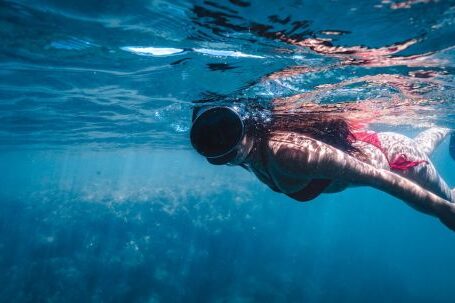Exploring the underwater world is an exhilarating experience for scuba divers. It allows them to witness the beauty and diversity of marine life up close. However, navigating underwater can be challenging, as there are no visible landmarks to guide the way. This is where the art of underwater navigation comes into play. In this article, we will explore the techniques and tools that divers use to navigate underwater.
Understanding the Basics
Before we delve into the specifics of underwater navigation, it is important to understand the basics. Divers rely on a combination of natural navigation cues, compasses, and dive computers to find their way underwater. Natural navigation cues include the position of the sun, the direction of currents, and the behavior of marine life. Compasses help divers maintain a sense of direction, while dive computers provide valuable information such as depth, time, and distance traveled.
Using Natural Navigation Cues
One of the key skills in underwater navigation is being observant of natural navigation cues. For example, the position of the sun can help divers determine their cardinal directions. In the northern hemisphere, the sun is generally in the south at noon, while in the southern hemisphere, it is in the north. Similarly, the direction of currents can be used as a guide. Divers can observe the movement of plants and animals to determine the direction of the current and adjust their navigation accordingly.
Mastering the Compass
A compass is an invaluable tool for underwater navigation. It allows divers to maintain a sense of direction even when there are no visible landmarks. To use a compass effectively, divers need to first establish their heading at the surface and then maintain that heading underwater. This requires proper buoyancy control and fin kicks that do not disturb the surrounding water. Divers should also periodically check their compass during the dive to ensure they are staying on course.
Navigating with Dive Computers
Dive computers have revolutionized underwater navigation by providing real-time data to divers. These devices not only display crucial information such as depth and time, but also track the distance traveled. By setting waypoints on the dive computer, divers can follow a predetermined route and easily navigate back to their starting point. Some advanced dive computers even have built-in digital compasses, further enhancing their navigational capabilities.
Practicing Navigation Skills
Like any other skill, underwater navigation requires practice to master. Divers can improve their navigational skills by participating in navigation-focused dive courses or by simply exploring new dive sites with a focus on navigation. Practice dives should include a variety of navigation techniques, such as natural navigation, compass navigation, and using dive computers. By continuously honing their skills, divers can become confident and proficient navigators.
Conclusion: The Journey Continues
The art of underwater navigation is an essential skill for scuba divers. By understanding the basics, mastering the use of natural navigation cues, compasses, and dive computers, and continuously practicing navigation skills, divers can confidently explore the underwater world. So, the next time you embark on a diving adventure, remember to embrace the art of underwater navigation and let it guide you on an unforgettable journey beneath the waves.





